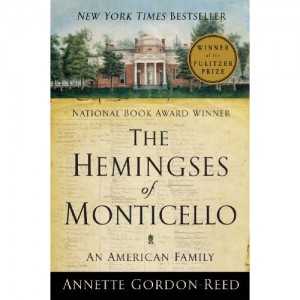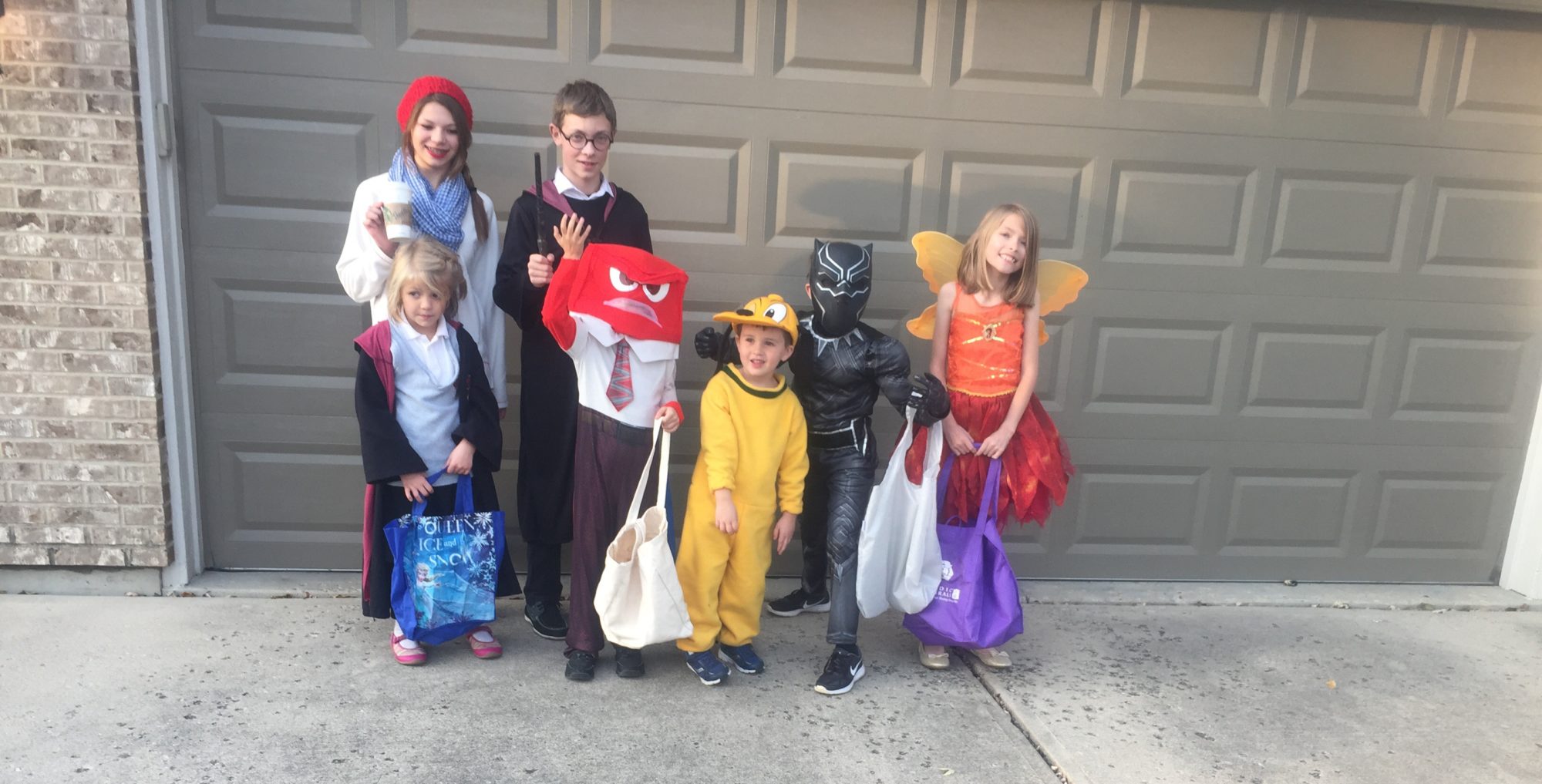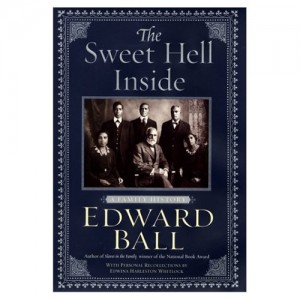I love to read. I’m not sure I’ve talked much about my reading habit on this here blog, but I am pretty much always reading something. I love it all: novels, biography, historical fiction, and non-fiction. I’ve loved reading since I was a child, and I hope my kids come to love it as much as I do.
Recently I’ve been reading a lot of historical non-fiction. Despite my poking fun at Emily for her desire to further her education, I’ve been furthering my education unofficially with history books for years. I love learning about the past, and I love switching from subject to subject. I love thinking of something I’d like to know more about, looking it up on my library’s online site, and reserving a couple of books on the topic. If I were going to go to graduate school just for funzies, I’d totally get a degree in history. Obviously, just for pleasure, and not for practical reasons.
So. I thought I’d share with you some of what I’ve been reading lately.
Recently I re-read a book my mom had loaned me a couple of years ago called Slaves in the Family. It was written about a dozen years ago by Edward Ball, a white man whose family had been one of the largest slaveholders in the South, rice planters from the South Carolina low country. By the time he was born, that was all long gone, but as an adult he set out to learn about what had happened to the descendants of his family’s slaves. It was a fascinating read! I learned a lot from it, and was happy to learn that Ball had written another book, about the family of an African-American woman he had might while researching Slaves in the Family, who was a very distant cousin of his.
It’s called The Sweet Hell Inside and it’s the story of a mixed-race family, the Harlestons, who lived in Charleston, South Carolina in the decades following slavery’s end as part of a small group of the city’s “colored elite”.
They were undertakers, and made their fortune because no white undertakers would handle the remains of black citizens. The Harlestons had more money than many whites but still struggled mightily against the racist laws in place at the time. They were wealthy, cultured, well-educated, and – forced to live as second-class citizens outside of their own neighborhood. Yet, it should be noted, that they were light-skinned and snubbed other African-Americans with darker skin, thus propelling discrimination instead of ameliorating it. Ball’s narrative, with recollections from a Harleston family member Edwina Harleston Whitlock, is a really fascinating and heartbreaking read.
After reading Ball’s two books, I decided I wanted to read more about how slavery and race relations affected a specific family, so I reserved and read Annette Gordon Reed’s Pulitzer-Prize winning The Hemingses of Monticello, about the family enslaved by Thomas Jefferson (though they came to him through his marriage to Martha Wayles, having belonged to her father. He had plenty of slaves of his own before he married, however.)
 The book details the lives of many members of the Hemings family and the social context in which they carried out those lives. The most famous Hemings is Sally, who was Jefferson’s wife’s half-sister (her father’s child with one of his slaves) and whom Jefferson took as a “concubine” (if you will) after his wife’s death (even though she was about the age of his own eldest daughter.) He and Hemings had seven children together, four of whom survived infancy. Three of those four left Monticello to “pass as white” – leaving slavery with Jefferson’s blessing to live in the white world (Sally Hemings was also mixed-race, and her children with Jefferson, being only 1/8 “black” were “white enough” to pass somewhere far away from home.)
The book details the lives of many members of the Hemings family and the social context in which they carried out those lives. The most famous Hemings is Sally, who was Jefferson’s wife’s half-sister (her father’s child with one of his slaves) and whom Jefferson took as a “concubine” (if you will) after his wife’s death (even though she was about the age of his own eldest daughter.) He and Hemings had seven children together, four of whom survived infancy. Three of those four left Monticello to “pass as white” – leaving slavery with Jefferson’s blessing to live in the white world (Sally Hemings was also mixed-race, and her children with Jefferson, being only 1/8 “black” were “white enough” to pass somewhere far away from home.)
Hemingses was dry in parts but so, so thorough and really, truly heartbreaking. The lives of the Hemings men – Sally Hemings’ brothers and nephews were very fascinating. Jefferson had many of them trained as artisans and allowed them to work on their own and keep their earnings when he himself was traveling away from Monticello – so long as they would hop to it as soon as he called for them. To this end, he allowed them to get tastes of freedom many times – but it was always temporary.
So there’s a brief summary of what I’ve been learning lately. Next up, I’ve decided to conquer World War 2 Germany. What books have you had your noses buried in?


I’ve been reading the Twanda Genocide and Lt. Gen. Romeo Dallaire’s Shake Hands With The Devil: The failure of Humanity in Rwanda. Just enough to write my research paper.
Then, I’m going to treat myself to some smut. 🙂
Oooo…I read Slaves in the Family years ago – can see it peeking at me from my bookshelf right not – but didn’t realize he’d written a follow up book about his research. I’ll be grabbing that one at my local library, too.
I’m with you on good books and reading as an education unto itself; I always tell my kids if they have a library card and a spark of curiosity, they can learn anything. ANYTHING.
A few more history authors/books for you if you haven’t read them:
Jeff Shaara – Killer Angels (Gettysburg) – movie was based on his book – + Gods and Generals (the men who led the North and the South) + The Last Full Measure (the end of the Civil War). Alll are totally compelling narratives based on loads of facts.
Stephen Ambrose – Citizen Soldiers + Band of Brothers (WWII) – the HBO miniseries was based on his books. Plus he also wrote one about Lewis and Clark called Undaunted Courage — very good history of their journey with a good look at the politics of that time in our history.
Ok, now my nerdy book self will hush up. 😉
Reading is the ony addiction this family needs! I am currently reading trash, because I need a break from my oh too cerebral life.
I’ve been reading about IVDD in dogs – Intevertebral Disk Disease – and recent studies/treatments for it, as Roscoe and Gwen are both facing disk issues right now. Maybe I’ll get back to reading something more entertaining in over the summer this year.
I skimmed this blog briefly…the books sound fascinating by the by and I’ll be checking them out too…but I wanted to share a vivid memory from 4th grade back at DC when we had elementary school in the “cool” building. Yea, the one with bathtubs in our restrooms. On a side note, it took me awhile to realize that MOST public bathrooms do not contain bathtubs! HA! Anyway, I remember being in library class and the librarian asked us what types of books we liked to read. Most people were like, “fiction!” and then there was Miss Jenny Brads who was like, “I love to read biographies.” And I’m sitting there thinking, “What is a bi-og-ra-phy?” So it doesn’t surprise me at all that you still love them. I do too now, even though at the time I thought you were CA-RAAZY!! 🙂 Guess I’m nuts now as well. lol
I’m reading not so much these days as I’m always looking for blog stuff!
I have a stack of books to read, some started, some not…looks like I need a trip to VA!
But, I read SITF YEARS ago and loved it.
UP
I reserved ‘Bonhoeffer: Pastor, Martyr, Prophet, Spy’ by Eric Metaxas from our library, because I just read some historical fiction about WWII and want to find out more about what the heck happened to the church in Germany when Hitler was on his way up. The WSJ reviewed this book yesterday; it sounds interesting.
Currently reading “David Crockett, The Man and the Legend”, by James A. Shackford. He was a bear-hunter, soldier, failed businessman, farmer, politician, adventurer, and patriot.
Also, according to Walt Disney:
He was born on a mountain-top in Tennessee,
(Greenest state in the land of the free).
Raised in the woods,
So he knew every tree.
Killed him a b’ar when he was only three.
Davy, Davy Crockett! King of the wild frontier!
I’m reading “Not for Sale”- a book about the modern day slave trade. More people are sold and traded in human trafficing now than were during the transalantic slave trade. Crazy!
Thanks Dan, I’ll be singing that all night!
And Jenny, did you read Skeletons at The Feast? WW II Novel. RRRRRRR-some!
UP
Books about the color line fascinate me! I’ll have to pick up the two Edward Ball books you’ve mentioned. I did like the book on the Hemingses.
If you can hold off on starting your WWII books and wish to read another book about an inter-racial family, let me suggest “The Color of Water: A Black Man’s Tribute to his White Mother”. In a nutshell this is about an extraordinary woman who was born a Polish Jew, passed as a light-skinned black woman, married twice (both times to black men), had nine children and saw all nine graduate from college. She just died in January 2010, I believe.
It was a riveting book; nothing got done in my life until I had finished it!
KarenM in NC
Just requested those books from my library. I’m excited to have something new to read! Thanks for the reviews!
well let me tell you my huge reads for the week! Dora the Explorer, If You Give A Moose A Muffin, Clifford the Big Red Dog…REALLY hoping to get back to a good book for an adult soon!! I will look into some of those up top though, they sound very interesting!
I love If You Give a Moose a Muffin! Ellen got it for Christmas from Aunt Katharine. I’ve been reading The Devil and Sherlock Holmes by David Gran. It’s a collection of 12 articles by a writer for the New Yorker that deal with obsession or madness of some sort. Very interesting!
Jenny-I am addicted to reading lately.
On the subject of slavery-Have you read “The Kitchen House” by Kathleen Grisson? It is one of my favorites. It takes place in 18th century when an white Irish 7 year old orphaned girl is sent to work and live at a tobacco plantation in Virginia. Great book!
On WWII subject, “Hotel at the Corner of Bitter and Sweet” is a must read. Author is Jamie Ford. You won’t want to put it down. A Chinese boy falls in love with a Japanese girl. Lots of info about internment camps, etc.
And, “The Guernsey Literary aen Potato Peel Society” by Mary Ann Shaffer-takes place on Nazi occupied Guernsey Islands during 1942-45. Easy read that you won’t want to stop reading.
I am telling you about my favorite books only. “Cutting for Stone” is really the best. Written by Abraham Verghese. It takes place in Ethiopia and America starting in 1954 when twin boys are born to an Indian nun(nurse) and a British surgeon.
I am going to look for the books you recommended. They sound good. Thanks